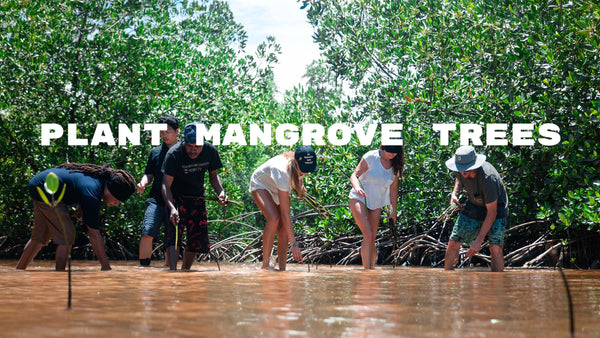There’s good news on climate change, from one of the world’s leading climate scientists, Dr. Michael Mann - "If we stop burning carbon NOW, We stop the warming of the planet."
If global society can cut carbon dioxide (CO2) emissions to “Net-Zero,” the Earth’s natural ecosystems can remove the remaining extra CO2 from our atmosphere.
If we can stop adding CO2 to the atmosphere every year, then the Earth’s carbon cycle has natural capacity to sequester carbon, which means we stop climate change in 20-30 years.
Amazing! What's "Net-Zero"?

The formula for Net-Zero is pretty simple:
- Reduce human CO2 emissions as fast as possible
- Increase the ability of the Earth to naturally sequester CO2
We need to get to Net-Zero as fast as possible.
Reducing human emissions requires a combination of advanced technology, reducing consumption, and smarter practices. This is hard work, and there’s no way to avoid it. But at least the pathway is clear.
However the challenge of reducing human emissions often obscures how easy it can be to help the Earth sequester CO2. The Earth has evolved ways to sequester CO2 since photosynthesis first appeared 3.5 billion years ago.
Quite literally, plants are the most advanced carbon sequestration devices that exist on the Earth today. Planting trees in high-quality, well-managed projects is the easiest thing anyone can do to remove CO2 from the atmosphere.
This doesn’t absolve us from reducing emissions in every aspect of our lives. But planting trees now will increase the likelihood of a better climate for our children and future generations.
Don’t take our word for it - Watch interview with Michael Mann above.
Deep Dive: A New Net-Zero Climate Change Policy
At SeaTrees, we are more than kinda stoked about the growing emphasis on Net-Zero. It signals a major shift in climate change policy. When climate change policies first gained prominence with the 1997 Kyoto Protocol, the core strategy was to reduce carbon dioxide (CO2) emissions, and then consider buying carbon offsets as a last resort.
This would have worked if global society had made serious progress in reducing emissions over the past 25 years. Unfortunately, human CO2 emissions have continued to increase every year since the Kyoto Protocol was signed.
Now, scientists and policy makers have realized that we need to update the strategy to have any hope of solving climate change before it’s too late. There is no escaping the need to reduce CO2 emissions as fast as humanly possible. But in parallel, we must also enhance the Earth’s natural healing abilities by protecting and restoring its ocean, wetland and forest ecosystems.
This is why Net Zero places an equal emphasis on reducing carbon emissions and removing carbon from the atmosphere. We consider this a major policy shift from the past 25 years of climate change policy, and it gives us hope.
SeaTrees and Net Zero
SeaTrees offers a variety of ways to support ecosystem regeneration in support of Net-Zero. We focus on planting and protecting Blue Carbon ecosystems, which have the highest rates of carbon sequestration of any ecosystem in the world.
Mangrove forests and kelp forests are extraordinary ecosystems that are hotspots for both biodiversity and high rates of carbon flux. Our projects are carefully designed and evaluated to restore these ecosystems, and support the local communities with jobs, education, health care, and other sustainable development benefits.
Carbon offsets can also be very effective at enhancing carbon sequestration. That’s why we support the Southern Cardamom Ridge-to-Reef project, which protects an intact old growth coastal watershed under imminent threat from logging and destruction. The funding from these offsets supports the sustainable development of the region to permanently protect the forest from destruction.
Need an even Deeper Dive? The Science of the Carbon Cycle and its “Flux Capacity”
The science behind Dr. Mann’s good news has two parts:
The first is about climate change prediction models. Climate scientists were using scenarios for the models that assumed take a hundred years for humanity to stop emitting CO2. This means that in these models, nature cannot get ahead—it can’t pull enough CO2 from the atmosphere to recover from climate change.
But when climate modelers ran scenarios with Net-Zero emissions, they were surprised to learn that natural carbon sequestration from the oceans and forests is extremely effective at reducing the remaining excess atmospheric CO2.
The stunning result is that nature will be able to recover much more quickly if we can just give it a helping hand and not only stop new emissions, but also increase the natural mechanisms that provide their carbon sequestration superpower.
The second part involves learning why and how nature is so good at removing atmospheric CO2. This requires a detailed look at the carbon cycle itself.
Earth has a finite amount of carbon, and it is the building block for all of life on our planet. It changes form via the life and death of organisms and via the weather patterns that are all part of the carbon cycle.
Earth’s natural systems exchange over 400 gigatons of carbon between the atmosphere and the biosphere (ocean and land) each year. This is called the annual carbon flux. About 4 gigatons (1%) of this annual carbon flux gets permanently sequestered in the ocean and land.
In parallel, humans are currently emitting 10 gigatons of carbon each year. Since this carbon is not balanced anywhere by nature, it overwhelms Earth’s annual natural sequestration capacity and causes atmospheric CO2 levels to steadily increase. CO2 levels are now at the highest in all of human history, measuring higher than than they have in 800,000 years.
However, if we can get to Net-Zero emissions while enhancing natural ecosystems that sequester CO2, then we can let that 4 gigatons/yr carbon flux do its job. We humans just need to reduce our fossil fuel emissions while simultaneously bolstering the natural ability of Earth’s ecosystems to remove CO2, restore balance, and heal the atmosphere itself.



